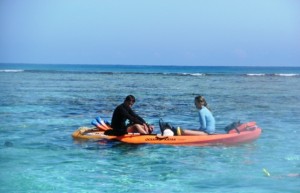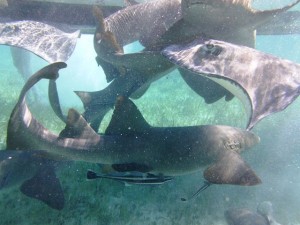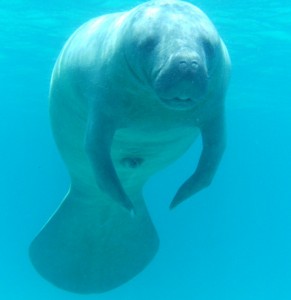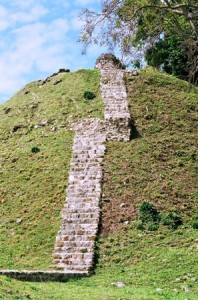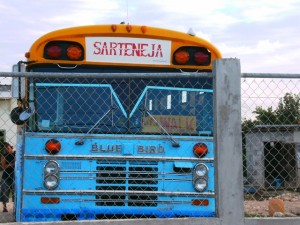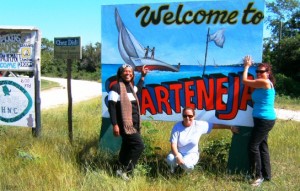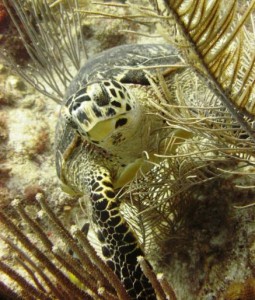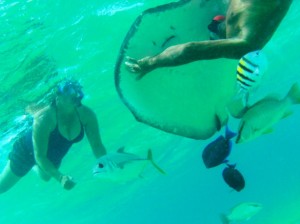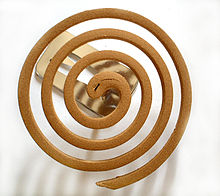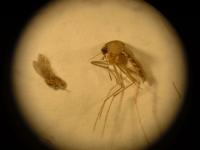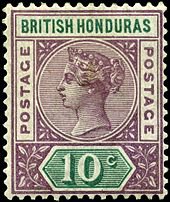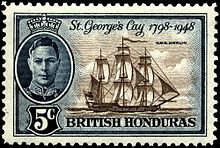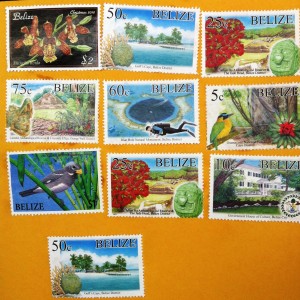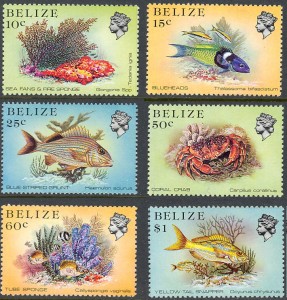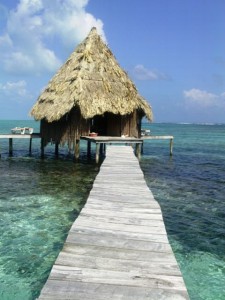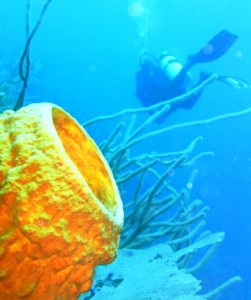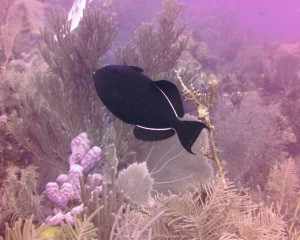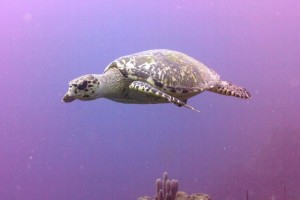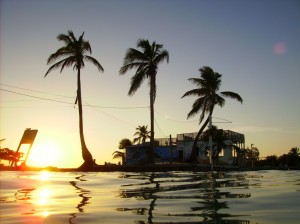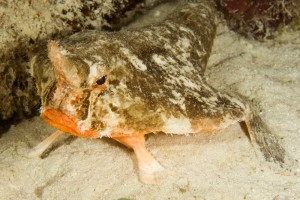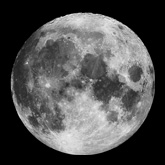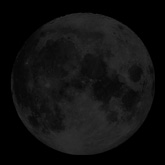Caye Caulker Marine Reserve
The Caye Caulker Marine Reserve was established in May 1998 and is located 1/2 mile east of the island, right in front of us. We wake up to it every day and we hear it when all is quiet on the island. It is beautiful to watch. It protects 5 habitats including mangrove, littoral forest, lagoon marsh-lands, sea grass beds and coral reef. We are so lucky to have this right in front of us. The snorkel trip out to the reef is a must do if you are staying on the island. There is a $10BZD marine reserve fee that is collected by the Park Rangers in the form of tickets, which are purchased at the Hol Chan Marine Office in Caye Caulker located by the police station. We include your ticket in the price of the tour. You can see all of Caye Caulker from the reef. It’s only a 5 minute boat ride away to reach Shark and Ray Alley. This stop is so amazing. Nurse Sharks and Sting Rays all start swimming towards the boat as we get a hold of the mooring buoy. They are eager for food, which first started when local fisherman cleaned their catch and it naturally attracted them. At the Northern end of the Reserve, is a channel and it attracts manatees from May until September. If we are lucky we get to see them and snorkel with them. TWO great reason to visit the Caye Caulker Marine Reserve.
Manatees spend most of their time feeding, resting or traveling. They prefer shallow saltwater bays, slow-moving rivers, canals, estuaries and coastal waters. Manatees are quite agile creatures. A manatee uses its flippers and tail to steer itself. It moves its tail up and down to propel its body forward through the water. Manatees can swim vertically and upside down; they can do rolls and perform aquatic somersaults. Their extra-dense bones enable them to stay suspended at or below the water’s surface.
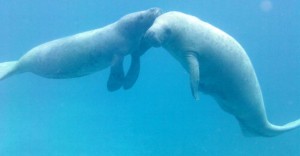 |
Manatees eat over 60 different species of aquatic and semi-aquatic plants. Their diet includes manatee grass, turtle grass, various species of algae, mangrove leaves, and water hyacinths. They may consume 10% of their body weight daily in vegetation. Their digestive system allows the bacterial breakdown of cellulose in the hind-gut. To accommodate the great volume of high-fiber food they eat, manatatees have intestines up to 150 feet long.
The jointed bones of manatee’s flipper serve a function similar to a human hand. Their structure helps the manatee move through the water, bring food to its mouth, and hold objects. Three or four nails are found at the end of each flipper. Manatees can’t turn their heads: unlike most mammals, they have six rather than seven cervical vertebrae, so they must turn their whole bodies to look round.
Manatees can grow over 13 feet in length and weigh up to 3,500 pounds. Lengths of 10-12 feet and 1000 -1500 pounds for adults are more typical. In spite of their size, manatees have relatively little fat; they are a sub-tropical species very susceptible to cold. Their eyes are small, but eyesight is good.
Manatee vocalizations take the form of chirps, whistles and squeaks. Communication is particularly frequent between mother and calf, or when the water is turbid. Manatees vocalize to express fear, anger, pain or sexual arousal. They are also adapted to hear infrasound frequencies below 20 hertz.
Swimming speeds of up to 20mph have been recorded, but normally manatees prefer to cruise at speeds of at 2-6mph. They will typically surface to breathe through their nostrils every three to five minutes. When they are using a great deal of energy, however, manatees may surface for air as often as every 30 seconds. They can stay submerged for up to 15-20 minutes.
Manatees have a slow reproductive rate. Twins are rare; when they do occur, one calf is suckled on each nipple, located just behind each of the flippers. More normally, one calf is born every 2-5 years. At birth, the calf is around 3-4 feet long. Guided by the mother, it swims to the surface to breathe. The new-born calf weighs about 60-70 pounds. It starts suckling – underwater – a few hours after birth.
The manatee gestation period is over a year, usually around 13 months. Mothers nurse their young for a long period. When they swim together, the baby may hold onto the mother’s back with its tiny flippers. The calf will remain dependent on its mother for up to two years.
Copulation, in various postures, takes place in the water. An oestrous female may be pursued for weeks by several ardent males who compete to mate with her.
Manatees are migratory animals adapted to both saltwater and freshwater habitats. They are also found in the coastal rivers and lagoons of Belize. Manatees can live up to 60 years. They may occasionally be disturbed by crocodiles, and suffer from habitat-degradation, but their only significant predator is Man.
Visiting the Belize District
Belize is divided into 6 districts. Belize District being the biggest and most populated. Then Cayo District, Corozal, Orange Walk, Stann Creek and Toledo. Caye Caulker is in the Belize District and many places you can visit for the day or overnight from here. My Sister and I, had the pleasure of visiting Maruba Spa the other day for a couple of nights. It is located on the Old Northern Highway, just before the village of Bomba and after Maskal. One hour from Belize City. There is another way you can reach Maruba by the old Northern River. We offer this tour with another local snorkeling shop in Caye Caulker called Anwar Tours. The trip is $100USD per person and includes round trip private boat transfer from Caye Caulker. Visit the ruins of Altun Ha and a visit to Maruba Spa. A serine river boat ride up river to Bomba Village. The trip is so alluring because of the visit to Maruba and seeing the Mayan Site of Altun Ha. All Mayan Sites of Belize are protected by NICH. The National Institute of Cultural and History. They are committed to the preservation of Belize’s ancient and historical era monuments and artifacts. After learning and exploring Altun Ha, you can cool off in the beautiful pool. Enjoy one of their signature rum punch and enjoy a exotic lunch in their jungle garden outdoor patio. There is second pool for guests only. We felt like we had the place all to ourselves. Indulge in the spa treatments, which are very reasonable priced compared to North America. So many places to see in Belize, even if your time is limited. I like to explore this beautiful country Belize, so if you have any questions, I can certainly try and help you with information or booking your accommodations in Caye Caulker and the rest of Belize. I always recommend a combination of nights on the Caye and a few days away on the mainland. Lots of different places and still more to experience.
The real truth behind Trip Advisor
The good, the bad and the ugly!
We all like it when people say nice things about us, who doesn’t? I recently went on Trip Advisor after a friend of mine said their was an unfavorable review and another that looks suspicious and malicious. I tried to write a reply and I couldn’t unless I submitted my credit card or forwarded by fax to Trip Advisor our hotel and tour operator license and proof that we own our business and a waiting period of up to 3-4 weeks for verification. Meanwhile I am thinking, a month of false information on the internet for the world to see. I just don’t understand how anyone can write anything on their site with no proof that they actually stayed or used our services and it gets published immediately and then we have to wait or have our management responses analyzed and rejected. I needed to find out more about this website that is owned by Expedia. A major airline and hotel booking website. I entered the phrase The real truth about Trip Advisor and this website came up.
www.tripadvisor-warning.com
Please take the time to read through this site and you will be surprised.
A thank you to all of those who have written on our website including that last review I received by email
From: Molly Williams
Subject: Bunny, Paul, Renee and the crew of a lifetime!
Date: March 17, 2012
Message Body:
I recently traveled to Caye Caulker with my best friend and booked two trips with Tsunami Tours while there. The first was to enjoy the adventure of exploring the Mayan site Al Tun Ha and later, indulging in the relaxing and exciting cave tubing trip. Paul, our adventure guide, greeted us at the water taxi in Belize city and was without question the best adventure guide we have ever had. He absolutely made the trip more spectacular which we would have argued wasn’t even possible with how much fun it was. The next day, we went on a 4 site snorkeling trip with Renee and his little boy Joseph. Everything about this trip was pure and simply perfection!! Thank you all for adding to our amazing trip 🙂
This mail is sent via contact form on tsunamiadventures.com http://tsunamiadventures.com
Heather Martin
Mar 17 (11 days ago)
to Molly
Thank you for your review
We really appreciate it
Can we post your review on our website and we will omit your contact details. Thank you very much
Mar 17 (11 days ago)
to me
Hi Heather,
Please feel free to post my review on your website! I was hoping you would! 🙂 Thanks again for everything and best of luck in the future!
Click here to Reply or Forward
Sarteneja, Belize
I just recently got back from a trip to Sarteneja. A friend of mine bought property there and it was about time to go see it. I have now been 3 times in my 13 years in Belize. The first time, I wasn’t too sure if I liked it. The second trip, I loved it. Sarteneja is a small fishing village of about 1800 people in the Corozal District of Belize. It is at the North Eastern Sea point of Belize. The name is derived from the Yucatec Maya “Tzaten‐a‐Ha”, which is thought to translate as “water in the rock”. The community was first established by the Maya, and is thought to have flourished between 600BC and 1200AD, covering the entire Classic period of Maya history. The village is built on the site of a large Maya settlement, and signs of the past Maya culture can be found everywhere. In the late 1980’s an archaeological study carried out in Sarteneja demonstrated that the area was once a prosperous, active, post‐classical seaport.
It is believed that Sarteneja may have held as many as 300‐400 ancient structures, with the site core being located 0.5 to 1.0km from the shoreline*. The architecture shows a strong Yucatec Maya influence, seen in rounded cornerstones, and carved limestone columns. The Maya are thought to have been attracted to the area by the salt pans, and the fisheries, both used as a source of income. The presence of object from non‐local resources ‐ obsidian and flint, jade and metates carved from volcanic rock, also suggest that this was a centre for long distance and regional trading, being an important stop‐over point for merchants and travelers. The area was a cross roads for people traveling between Mexico, the reef, and the Corozal region., suggest trading links with Maya from other areas.”
About forty miles by road from Orange Walk Town and is near the privately owned Shipstern Nature Reserve. You can get to Sarteneja by boat, bus or plane. The Thunderbolt runs every day. Departing San Pedro at 3pm and reaching Sarteneja about 4:30pm before it continues to Corozal. Thunderbolt departs Corozal at 7am and stops in Sarteneja at 7:30am before reaching San Pedro about 9am. The price one way from San Pedro is $45BZD and from Corozal is $30BZD. You must call and confirm pick up and drop off. The quickest way to reach Sarteneja is by plane. At Tsunami Adventures we can book your next flight to Sarteneja for $121.50BZD one way from San Pedro to Sarteneja. Ask us for more details and schedules or check with www.tropicair.com The bus’s is the slowest route and the most popular amongst locals and budget minded travelers. Cost is $10.00BZD one way. Buses leaves Sarteneja depart at 6am and it takes about 2 hours to reach Orange Walk. From there you can connect to Corozal or Belize City. Buses are departing Orange Walk in the early afternoon about 2:30pm. Look for the Baby Blue Blue-Bird Buses.
The village’s economy is based primarily on fishing for lobster and conch, although tourism is becoming increasingly significant as a source of income. There are a few hotels and restaurants.
www.sarteneja.net
www.sartenejatours.com
www.shipstern.org
When you come to Belize, we want you to stay in Caye Caulker, but of course we know you want to check out different places. So take a couple of days and visit Sarteneja. Especially stop by my friends place, called Complete Circle. Really good food and just a short walk from the water.
Underwater Digital Cameras for Rent
Whether it’s your first time snorkeling or your annual scuba trip to Belize. Tsunami Adventures and SeaLife Cameras can help you discover the underwater world. For over 25 years, Pioneer Research has made the world’s most popular underwater cameras.
Consider purchasing a camera before you come to Belize or rent one for your snorkeling trip or dive excursion when you are here.
www.sealife-cameras.com
Pioneer developed the first SeaLife underwater camera in 1993. A new breed of cameras, our cameras made it easier and more enjoyable then ever before to take pictures underwater. In 2000, SeaLife pioneered underwater imaging with the introduction of its first digital underwater camera that revolutionized the world of underwater photography.
At Tsunami Adventures we rent the Mini II, waterproof up to 135 feet, the DC1200 or 12MP camera, waterproof up to 200 feet and the DC1000 or 10MP camera, waterproof up to 200 feet.
All the pictures on our website and facebook page are all taken with Sealife Cameras.
Please go to the Sealife Cameras website and enter your photo of month. You could win a mini II
www.sealife-cameras.com
Sand Flys The National Bug of Caye Caulker
Caye Caulker is a beautiful little island with one annoying little pest that comes out when the breeze stops. Everyone be aware of this little pesky creature. Find a hotel that offers fully screened windows or air conditioning. Costa Maya Beach Cabanas offers this and I can honestly say, that I have personally stayed in every room and can say that I have never been bitten by a sandfly while sleeping. Sandflys are more common during and after rainy season. Here is some facts about these little pests, which I think are worse than mosquitos.
Sandfly is a colloquial name for any species or genus of flying, biting, blood-sucking Dipteran encountered in sandy areas. You may have heard of them already (no-see-em, noseeum). Sandfly bites may leave a small red bump or leave a large, red itchy bump(s) that may turn into a rash. These bumps are frequently several times as itchy as mosquito bites, and tend to last longer as well. In the various sorts of sandfly only the female is responsible for biting and sucking the blood of mammals, reptiles and birds. She requires the protein in the blood to make her eggs. Belize and Honduras are notorious in the Caribbean for their sandfly populations and travel pages frequently warn tourists to bring bug spray containing high concentrations of DEET. There is lots of local remedies to protect you against the sand flies bites. We sell at Tsunami Adventures. Itch-A-Way www.BelizeHemp.com It works fantastic. It stops the itch and burn and promotes rapid healing. Another local product is BJ’s Skin Solution. There is also a few others out there, a mixture of essential oils and coconut oils work well. Also most effective is the mosquito coils. They are black coils that are made in Asia. Not recommended to sleep while these things are burning, but good to leave around the area where sandflies are and the smell drives them away. Another thing you may encounter is the vap mat. It plugs in and has a little warming pad that you put a vap mat in it and it emits a smell that the sandflies don’t like. You can buy this machine at the local chinese store as well as the mosquito coils.
Mosquitos and Sand flies are not around all the time. Dusk and Dawn. More to the back of the island and by mangroves. The more humans keeping things clean the less bugs. The island sprays regularly to keep the bugs at bay. The truck does a cycle of 3 times. You may be see it pass by. During dry season it is the best time to visit. No rain no bugs. I have lived here for over 10 years and it has gotten way better and the bugs are not as bad as they used to be.
If they where so bad, we wouldn’t all live here and nobody would come visit. So don’t let them chase you or detour you from coming. It hasn’t stop anyone else yet.
Belize Postal Service
It has been very busy at Tsunami Adventures and Costa Maya Beach Cabanas and we haven’t had the chance to make any website updates. I did manage to send out christmas cards to friends. I like to support the Postal Service as if the computer world ever crashes, we will be back sending letters in the mail. It is always fun to get a letter and even better to get a parcel. Caye Caulker has it’s own Post Office, located at the village council office complex. It is located beside the library and traffic office. The health clinic is here as well as a community center, where it is always being used for different functions. When I first came to Caye Caulker, the post office used to be on the back street and was seldom open. Now it is very efficient and open Monday to Friday. There is over a 100 post boxes. Tsunami Adventures and Costa Maya Beach Cabanas is BOX 76. Caye Caulker. Belize. Please send us a hello. If you need to reach anyone, just address it to their name, Caye Caulker Post Office. Here is some pictures of stamps as well as some interesting history about stamps.
The Central American country of Belize started as the colony of British Honduras, formally established in the 17th century but disputed through the 18th century. British Honduras letters were sent via Jamaica, and are known from 1786. A handstamp reading “Belize” is seen on foreign mail from about 1800, and the first local post office dates from 31 October 1809. British postage stamps were introduced in 1858, with obliteration “A06” used at Belize. This continued until the colony took over the operation of its own posts on 1 April 1860, and thereafter mail was stampless, handstamps being used to indicate payment of postage. In 1866 the colony introduced its own stamps. The design was a profile of Queen Victoria typical of British stamps of the time, with an oval band reading “BRITISH HONDURAS” and the denomination, which in the first issue consisted of 1d, 6d, and 1sh values. The design continued in use until the Key Plate issue of 1891, with periodic changes of watermark and perforation. The currency changed from pounds to cents and dollars in 1888. As with many of the British colonies, British Honduras issued its first pictorial stamps in 1938, a series consisting of 12 stamps with values from 1c to $5. The two-color designs included Mayan figures, agricultural industries, and local scenes.
HMS Merlin on a stamp of 1949, The 150th anniversary of the Battle of St. George’s Caye was commemorated with six stamps in 1949, three depicting the cay, and three depicting HMS Merlin. Self government British Honduras was granted self-government on 1 January 1964 and issued its last issue as British Honduras at the beginning of 1973, celebrating the festivals of Belize. Change of name, On June 1, 1973 British Honduras was renamed Belize and the first issue in 1973 used stamps of the former British Honduras opted with BELIZE and two stars. The first issue without overprinting followed this in 1973 with a Royal Wedding issue of two stamps. Since then, it has been a collection of beautiful stamps. Here is some photos of the current stamps of Belize.
Glover’s Atoll
We just recently got the pleasure of finally going to Glover’s Atoll. I have always wanted to go and finally I had the perfect reason. My sister came to visit and it was our turn to enjoy some time together and do what we love to do go diving. We decided to go to Glover’s Atoll Resort and Isla Marisol. We stayed our first 2 nights on Glover’s Atoll Resort also known as North East Caye and our 3rd night Isla Marisol also known as Southwest Caye. Both places where amazing. So, if any of you out there need detailed information, please do not hesitate to contact us.
GLOVER’S ATOLL was named after pirate brothers, John and Rodger Glover, in the1750’s. Before pirates the Mayans sailed here, pieces of Mayan pottery have been found on the islands and beaches. In 1996 the Atoll was designated as Marine Reserve. Thirty percent is zoned as a no take zone patrolled by Rangers from the Belize Fisheries Dept. The Rangers are stationed on Middle Caye, a research center owned by Wildlife Conservation Society. In 2000 Glover’s Atoll was designated a WORLD HERTIAGE SITE under the UNESCO World Heritage Convention. This not only is an honor for Belizeans but it also makes us aware of how important our magnificent atoll really is. And it really is.
Glover’s Reef Atoll is located some 35 miles South East of Dangriga Town. It is made up of about five atoll islands. Glovers Reef Atoll and Glovers Reef is a Managed Resource Area that’s part of the National Protected Area System of Belize. It serves the function of wildlife protection, environmental protection, visitation, research and education in addition to allowing controlled extractive use; hence the catch and release policy of fishing. All guests are asked to adhere to the Marine Reserve rules.
Wildlife and environmental protection of Glover’s Reef are ensured by the Government of Belize in the form of a Fisheries Protection Vessel stationed at Middle Caye. Located to the North East, Middle Caye also has a research station that provides accommodation for non-governmental organizations which study the marine life of the Reef. This protection has helped rebuild fish stocks from over fishing.
Glovers Atoll the Marine reserve has also benefited by an increased awareness of the need to protect the reef. This awareness is fostered by the resort staff and guides. All protocols given by staff are so that the pristine nature of the area is maintained for the future. Caring for our environment and ecology is important and essential if these islands are to be maintained for future generations.
The waters around the Cayes, provides plenty of opportunities to see Turtles, Dolphins, schools of Flying fish and myriad’s of sea birds. The Pelican and the Frigate Bird are often seen following the fishing boats into the pier swooping low to see what has been caught. The Island is home to some seagoing Hawks that nest high in the coconut palms. The white sand beaches of the Caribbean are here at the resort. Here you may find conch shells and small pieces of coral. The area has spectacular views of nearby Islands and at night the stars light up the heavens. The moon shines clearly across the open sea and reflects softly on the calm waters.
Mystery Fish at Split?
Tsunami Adventures is very close to the split. We rent lots of snorkeling gear to those who want to explore the mangroves in and around the Split. When guests come back to return their gear, they always ask me about this weird fish or something they saw. I don’t even ask anymore for them to describe. I have the page book marked and there it is the Shortnose Batfish. Part of the Odd-Shaped Bottom-Dwellers. It likes to sit motionless in shallow water but is also seen in deeper water. It can be from 6 inches long to maximum 15 inches long. It looks like a big ugly underwater toad with a funny horn sticking out.
Here is some more information about the Shortnose Batfish.
A bizarre creature with a nose like Pinocchio’s hovers over the sandy Caribbean seabed. With its warty skin, it looks more like a shorn sheep than a fish. There are about 60 batfish species, some living in diveable depths, others thriving on the edge of ocean abysses at 300m. This particular curiosity of nature, which grows to no more than a foot long and usually half that size, leads a secretive life in sand and mud and has adapted itself to get the best from its environment.
Its grotesque body is flat and broad, with a long, slender tail and a small mouth. Its gills are relatively small pores, located not behind the head but behind the arm-like pectoral fins. But what is that nose for?
In frogfish (Antennariidae), the first dorsal spine is modified into a movable fishing lure. Ogcocephalidae have a similar lure in a depression between snout tip and mouth, though it is shorter and less manoeuvrable. When hungry, the batfish freezes on the seabed and moves this lure back and forth like a piston. When a small fish is tempted and approaches, the batfish opens its mouth and quickly sucks in the unsuspecting victim.
Sometimes batfish throw a sand blanket over themselves and remain motionless on the seabed, waiting until the fish has consumed its own prey of molluscs, worms or crabs before making its move. Batfish might not be cuties but they are cunning characters.
The fascinating lure of the shortnose batfish developed to compensate for its lack of speed, though the price it paid was in manoeuvrability. Unlike other fish, it is a bad swimmer. Instead of graceful movement through the water, when it tries to swim the impression it gives is of a pitiful thrashing about.
However, again like frogfish, it has developed strong extremities, with pectoral and pelvic fins that resemble hands and feet. Usually Ogcocephalus stalks around in a relaxed manner, yet from time to time it can be seen jumping like a rabbit, crawling like a toad or walking four-legged like a dog! And when it’s time for it to move on to new feeding grounds, it walks.
If threatened, this peculiar fish immediately flutters to the ground to seek shelter in the sand.
Finding the bizarre shortnose batfish is a highlight for divers and its awkwardness, clumsiness and weird beauty make it a desirable subject for photographers. But there is still much to learn about Ogcocephalus, including its mating habits- which remain a complete mystery.
Star Gazing Caye Caulker
Every night I look up into the sky to see if there are stars. Have the clouds covered them up for me to see another night? It is so nice to sit on the beach at Tsunami and Costa Maya, look up and see the sky so clearly, like last night. We sat and enjoyed the view. The best star gazing is when you go out to the reef or to the North side of Caye Caulker, where you are a away from the lights of the island. Try Tsunami Adventures, Night Snorkeling or Croc Cruise and Star Gazing Tour.
Here is some information from www.stargate.org it is a great website and full of information. Here is some tips for this week.
Stargazing Information
With summer’s luminaries dropping from view, a new season opens in the evening sky. Pegasus slides into view in the east shortly after nightfall, marked by the Great Square. The constellations that form the “celestial sea” — Capricornus, Aquarius, Pisces, and others with a watery theme — flow across the south. And four of the five planets visible to the unaided eye put in good showings this month, with a sixth planet, giant Uranus, worth a look through binoculars.
This Week’s Stargazing Tips
October 21, 2011
Moon and star icon The Moon cozies up to Regulus, the brightest star of Leo, in the wee hours of tomorrow morning. They are high in the east at first light, with Regulus to the left of the Moon. The orange planet Mars stands a little above them.
October 22, 2011
Sparkle icon The globular cluster M15 is high in the southern sky at nightfall. Through binoculars, it looks like a fuzzy star. It’s actually a globe-shaped family of several hundred thousand stars that may contain a large black hole at its center.
October 23, 2011
Star icon Pisces, the fishes, which is one of the constellations of the zodiac, is in the eastern sky after nightfall. It is faint, though, so you need a dark sky to see it.
October 24, 2011
Star icon The constellation Andromeda’s main figure is two streamers of stars that form a long, skinny V. It is high in the east and northeast at nightfall, and climbs directly overhead by midnight.
October 25, 2011
Galaxy icon M31, a giant galaxy in the constellation Andromeda, stands high in the east-northeast at nightfall. It looks like a skinny smudge of light that’s wider than the Moon. That smudge is the combined glow of hundreds of billions of stars.
October 26, 2011
Galaxy icon New Moon occurs at 2:56 p.m. CDT today, when the Moon crosses the imaginary line between Earth and the Sun and is lost in the Sun’s glare. It may be just visible as a bare crescent tomorrow evening.
October 27, 2011
Jupiter icon The planet Jupiter is putting in its best appearance of the year. It rises around sunset and is in the sky all night. It’s brightest for the year, too, far outshining all the true stars in the night sky. Look for it low in the east as night falls and arcing high across the south later on.
This is very bright and seen from Costa Maya Beach Cabanas.

